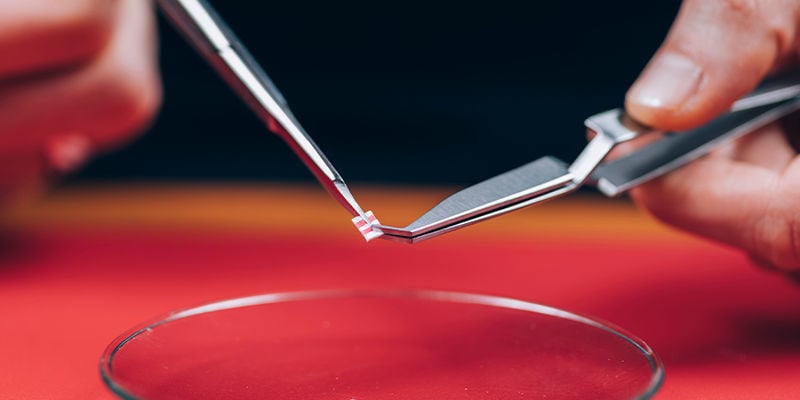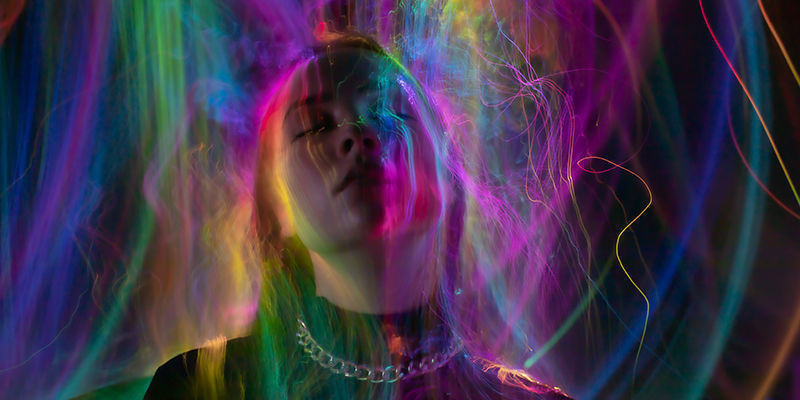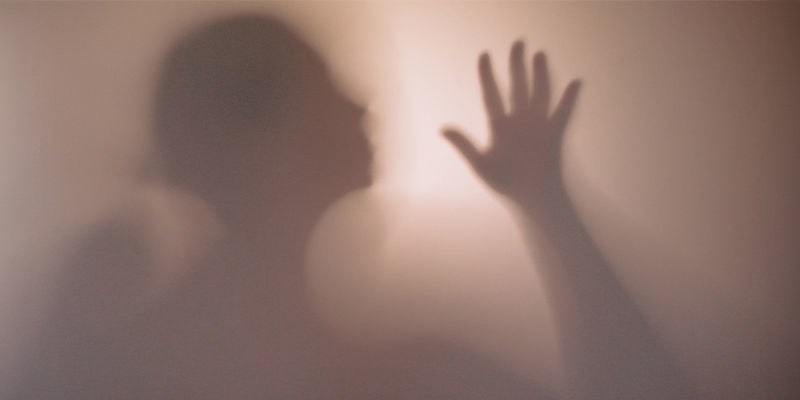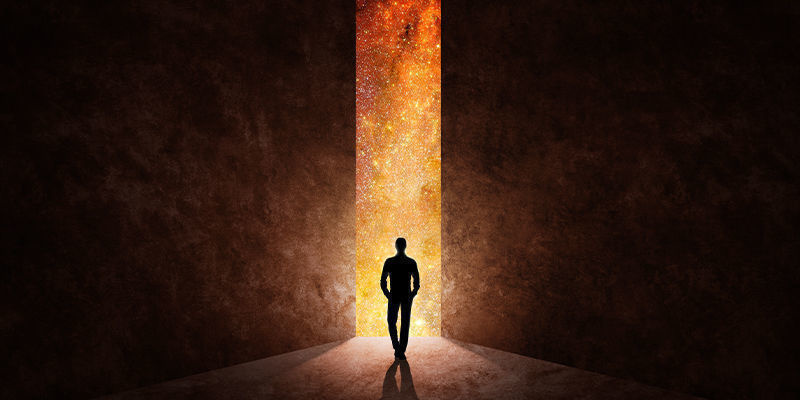
What is ego death and what does it feel like?
Ego death is one of the most extreme experiences that can be reached by using psychedelics. As such, it is not to be recommended lightly. Transcending fun and recreation, ego deaths are unsettling states that can be wonderful or terrible. Let's take a look at them.
The term “ego death” is thrown around a lot, with all sorts of uninformed advice surrounding it. Here, we’re looking at what ego deaths are and whether—and when—they should be sought out.
The dissolution of the ego is an extreme experience; it’s not a recreational activity, nor is it always beneficial. But it can be beautiful and will undoubtedly change your experience of life, potentially for the better. Let’s dig a little deeper.
What is the ego?

Before we can explore ego death, or ego dissolution, it helps to understand what the ego (the thing dying or dissolving) actually is. The ego is not a person’s arrogance, as it is often characterised in common usage. Instead, the ego should be understood as it is in psychology: a person’s sense of self.
This includes information about oneself (name, age, etc.), self-esteem or self-value, and beliefs (self-identity). Put differently, it can be understood as how a person differentiates and understands themselves as separate from others and the wider world—this is crucial.
Egos are necessary to normal functioning. They filter the world, help us navigate and make sense of it, provide some psychological defences, and basically allow us to operate as individuals. However, this comes with some downsides. They can become fragile, rigid, and heavily biased.
Is the ego real? Kind of. It is generally agreed that the brain’s default mode network (DMN) is the physiological “seat” of the ego and controls much of higher-level consciousness. This part of the brain is thought to filter stimuli and activity from different parts of the brain and process them into the easy-to-understand experience most of us are having all of the time. While highly functional, this process strips away most of the details of the world and creates a highly subjective experience.
But by dissolving the ego, we free ourselves from our ingrained and learnt biases (for better or for worse)!
Ego deaths: What exactly are they?

So, ego death or dissolution is essentially a dampening of the DMN that lets the world spill into the mind unfiltered. In the process, the sense of self dissipates, leaving people feeling utterly at one with the wider universe. This sense of oneness is total, and not always pleasant. You might be able to name yourself still, but it will be entirely meaningless. All distinctions cease to matter.
Ego deaths allow people to see the world free from any of the learnt concepts and preconceptions we have both about ourselves and everything else in the world. It is a highly inhibiting state. In fact, a person experiencing ego death can do little more than lie on the floor and let the experience overwhelm them. Try to speak and you will find it extremely difficult, and quite likely impossible.
This phenomenon is very hard to explain or define, but we'll come back to it.
Which drugs cause ego death?

Drugs are the quickest and "easiest" way to experience ego death for those who aren’t extremely well-practiced in advanced forms of meditation.
Drugs that can induce ego death include:
- LSD (acid)
- Psilocybin (magic mushrooms)
- DMT
- Mescaline
Can other practices induce ego death?
Psychedelic drugs aren’t the only way to dissolve the ego. In fact, years of preparation and meditation may be a healthier way to do it. Various spiritual practices from across the world seek to induce ego death. In fact, sometimes it is the ultimate goal of the practice.
Essentially, different forms of meditation can all ultimately lead to the dissolution of the ego. It doesn’t matter which. There are specific practices in Buddhism, Hinduism, and Islam that lead to what we might describe as “ego death”.
What does ego death actually feel like?

It’s possible that there is no experience more difficult to describe than ego death. Imagine being overwhelmed by sensory stimuli while simultaneously feeling that “you” cease to exist. It’s sort of like dying and being born all at once.
It is undoubtedly an overwhelming experience that must be surrendered to and cannot be fought. There is no single element of it that can be focused on; rather, it is total, affecting all senses equally and simultaneously. This is what the DMN is for—to filter and control these experiences. Shut it down, and there are no distinctions left.
Ego death can be terrifying, or it can be wonderful—it depends on how willing and able you are to give in to it. Trying to resist it is like trying to swim against rapids in an overflowing river (you’ll drown), whereas going with it is like floating with the current, wherever it may take you. The former experience is terrifying; the latter is exhilarating and soothing, if you can manage it. Either way, you will be swept away but will ultimately reach calmer water, where you will gradually return to yourself.
What are the effects of ego death?

Ego deaths have numerous effects, both positive and negative. Some last as long as the experience itself, while others are longer lasting.
The positive aspects of ego death
Some potential positive effects of ego dissolution include:
- A greater sense of oneness and unity
- Mental reset
- A liberating sense that things don’t matter
- A simultaneous sense of mysticism and clarity
- Enhanced empathy
- Old patterns can be broken
- New perspective
The negative aspects of ego death
It’s not all positive, though, especially if you can’t give in to it. Potential negative effects include:
- Fear of death or psychosis
- Sense of distrust towards existence
- A lasting sense of the world lacking reality
- Extreme fear
- Jarred sense of self
- Total inhibition
The stages of ego death

Timothy Leary broke ego death down into three distinct stages. Though you needn’t agree with this model in order to believe in the value of ego death, it is general enough to accommodate most people’s experiences. The three stages are:
- Chikhai Bardo: Ego loss, a "complete transcendence" of the self
- Chonyid Bardo: The Period of Hallucinations
- Sidpa Bardo: The return to routine reality and the self
How do you know you are experiencing ego death?

Honestly, if you have the thought “I am experiencing ego death”, you probably aren’t because there is no “I” during ego death. During the experience, you will be entirely present and consumed—normal thoughts will cease.
So, how can you know if an experience you had was ego death? Once you’ve had one, you can't mistake it, but you can mistake something that isn’t one for ego death if you’ve never experienced one before. The key is total dissolution of the self and a complete merging with the wider universe. This is not the same as having the thought or realisation that you are one with the universe; it is the total experience of that.
Ego death is a thoughtless experience. If you feel pleased that you are having an experience you’ve been reaching for, then you are not experiencing ego death, as it is the ego that can be pleased to have achieved something.
You will know if you’ve had one. If you haven’t had your sense of everything shaken and disrupted, then you probably haven’t got there.
Should you go looking for ego death?
Ego death is not an “achievement”. It is not the mark of a “true” psychonaut or anything like that. It's certainly a life-changing experience, but it’s nothing to be boastful of—it’s certainly not something to fuel the ego.
So there’s no need to go looking for one. Definitely don’t try to experience ego death just out of a desire to get more high. Also don’t go seeking one if you feel unhappy and unwell and you’re looking for some fix—it might help, or it might make things worse.
Ego deaths are best experienced by people who are good at surrendering to extreme situations and willing to have the foundations of their beliefs about themselves and the world shaken. Ego death is not some extreme drug experience that should be sought out for fun. Experienced at the wrong time, they can be severely disruptive to a person’s well-being and can take a lot of work and time to set right again.
Smartshop
A unique range of natural products. From psychoactive herbs and cacti to incense, aphrodisiacs, drug tests, and more.
Ego death: One of the strangest experiences

Ego death is probably the strangest experience you can have. But whether or not it’s the “best” comes down to you, where you are in your life, and the context in which your ego dissolves. It might seem counterintuitive, but a secure sense of self is important if you are going to have ego death and come out the other side intact. If you have a secure sense of self, then it can be shaken without being damaging; an insecure sense of self will just be made more insecure.
If you do choose to experience ego death, read about it! Look at advice from across the psychedelic community and beyond. Don’t try to understand what it will be like—this is impossible—but look for advice about how to prepare for one, how to give in to one, and how to care for yourself after, because you will need some degree of care. Good luck, and remember that you will return to yourself.
- Contributors to Wikimedia projects. (2001-10-30T23:52:42Z). Sigmund Freud - https://en.wikipedia.org
-
 6 min
2 May 2025
How to prepare for a safe psychedelic trip
Psychedelic experiences benefit from knowledgeable and careful planning. It doesn't need to be over-the-top, but a little prep can make a trip absolutely wonderful. Find out how to prepare for a...
6 min
2 May 2025
How to prepare for a safe psychedelic trip
Psychedelic experiences benefit from knowledgeable and careful planning. It doesn't need to be over-the-top, but a little prep can make a trip absolutely wonderful. Find out how to prepare for a...
-
 4 min
19 September 2023
5 Herbs To Help With Lucid Dreaming
If you are looking for a herbal aid to your lucid dreaming endeavours, we have the list for you. Below you will find a selection of traditional herbs all anecdotally thought to help dreamers reach...
4 min
19 September 2023
5 Herbs To Help With Lucid Dreaming
If you are looking for a herbal aid to your lucid dreaming endeavours, we have the list for you. Below you will find a selection of traditional herbs all anecdotally thought to help dreamers reach...
-
 4 min
4 October 2020
Everything You Wanted To Know About Psychedelic Yoga
Since the 1960s, there has been a growing interest in using psychedelics to improve yoga practice. Yet the relationship between the two goes back thousands of years. Could it be that psychedelics...
4 min
4 October 2020
Everything You Wanted To Know About Psychedelic Yoga
Since the 1960s, there has been a growing interest in using psychedelics to improve yoga practice. Yet the relationship between the two goes back thousands of years. Could it be that psychedelics...
-
 5 min
3 October 2019
The Psychedelic Trip Sitter's Guide
Whether you are new to psychedelics or an experienced hand, the benefits of a trip sitter are significant. While they will not guide your trip, they are there to make sure you can explore the...
5 min
3 October 2019
The Psychedelic Trip Sitter's Guide
Whether you are new to psychedelics or an experienced hand, the benefits of a trip sitter are significant. While they will not guide your trip, they are there to make sure you can explore the...





 United States
United States












